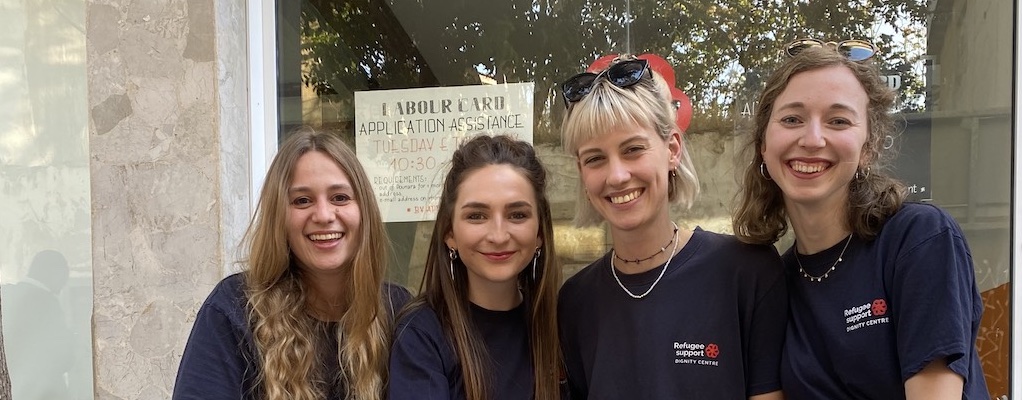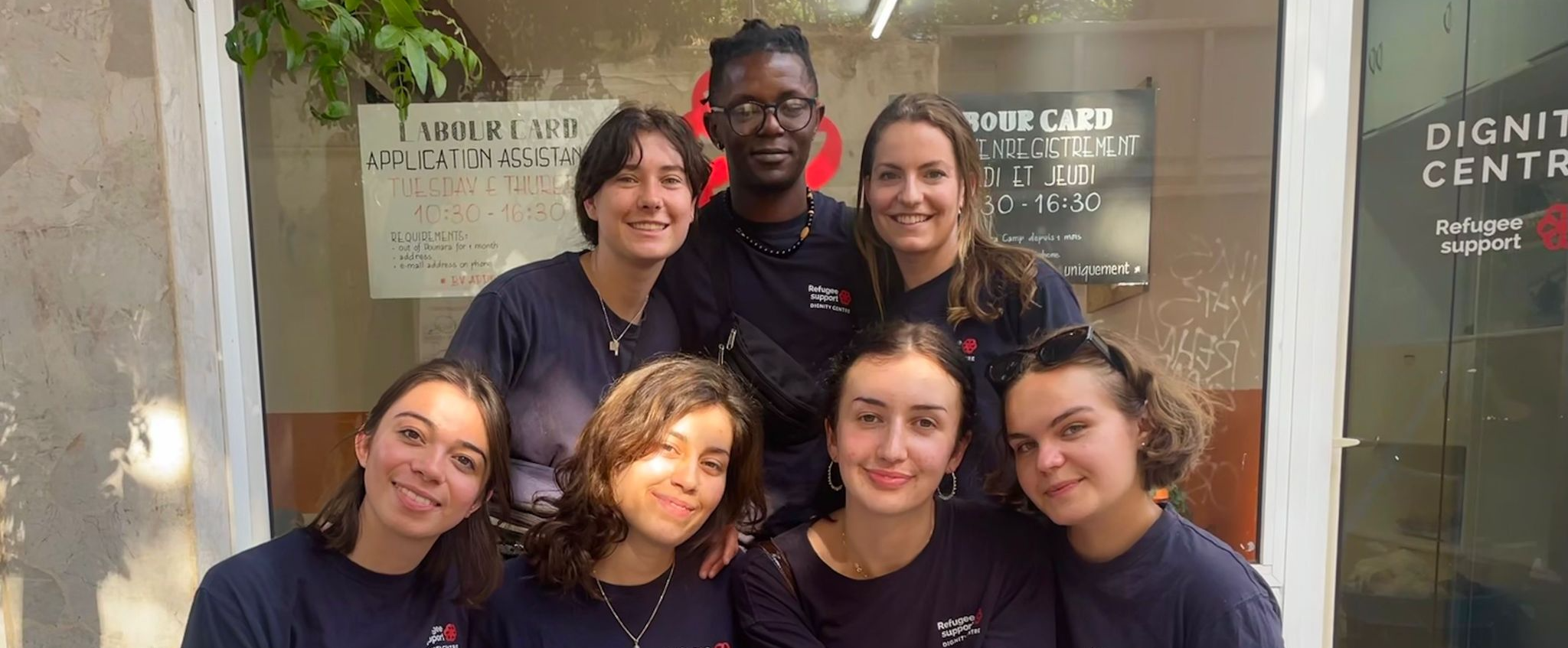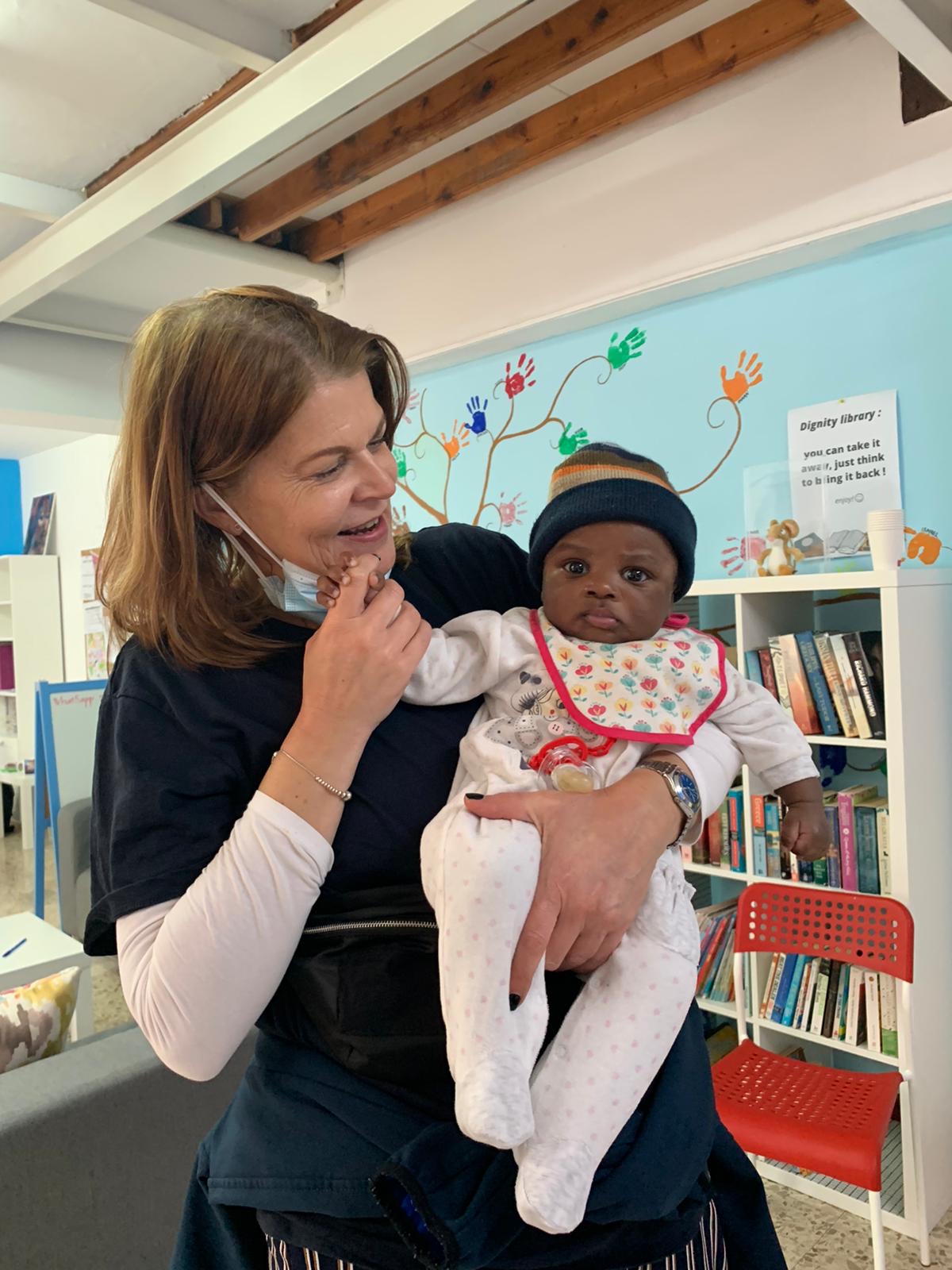A Country to Call Home
It’s 8am in Ioannina, (pronounced Ee-Yah-neena) a college town of about 100,000, that dates back to the 6th Century in the Epirus region of Northwestern Greece. The town is situated next to picturesque Lake Pamvotis with the snowcapped Pindhos mountains as its backdrop and a centuries-old Byzantine Castle perched on its western shore. Ioannina commuters are out in strong in the bustling city center this brisk, grey, February morning. Lining downtown Ioannina’s cobbled streets, the restaurants and bars that were busy and loud the night before, are quiet now, their chairs upended and owners home asleep in their beds. But outside, office and shop workers, housewives, school children, and college students all weave and charge ahead in determined strides, as if great things await.
This morning my friend, Annie Braak-Katz, and I are just part of the throng in downtown Ioannina, making our way to a bus stop, a half mile from the comfortable backstreet airbnb we’re renting. Our destination is the refugee camp outside the small rural working-class town of Katsikas, 8 miles south of here, where we’ve committed to working as volunteers for the next three and a half weeks. This is Annie’s third volunteer stint with Refugee Support Europe.
Working at a refugee camp will be a first for me. Annie, from back home in rural Northern California, has done this twice before and it was her stories, and seeing an art exhibit of refugee children’s drawings that she’d curated at the Morris Graves Museum in nearby Eureka, that inspired me to join her. So here we are, and for the next three weeks, Ioannina will be our home, Katsikas Camp, our workplace, and serving refugees, our service.

Currently, there are approximately 60 million refugees or internally displaced people worldwide. More than 60,000 of them are in Greece. There they register upon arrival, apply for asylum, and then, they wait. They wait as the beleaguered, economically stretched, Greek government slowly processes their applications. They wait for months, sometimes years, for an interview to discuss their situation and the possibility of settling in the EU. Waiting is what the approximately 380 residents at Katsikas Camp are doing. Most are Syrian asylum seekers, but there are at least 9 other nationalities represented at Katsikas including Iran, Iraq, Afghanistan, Kuwait, Somalia, Ethiopia, Democratic Republic of the Congo, Eritrea and South Sudan. Many more refugees are still stuck in camps in Turkey and the Greek islands after they’d left their war-torn countries.
Since the summer of 2015, more than 1 million refugees from the Middle East and North Africa have arrived on Europe’s doorstep, most landing first on Greek and Italian soil. Fleeing war, persecution, and economic devastation, many planned to continue their journey onward to central and northern Europe, only stopping in Greece for several days or weeks at the most. All this changed after the ratification of a treaty between the European Union and Turkey in March 2016, which stated that all refugees and migrants who arrived in Greece after that month would be returned to Turkey. In exchange, European governments agreed to increased resettlement of Syrians from Turkey to the EU. The Treaty was implemented as a temporary solution to stemming the flow of irregular refugees to Greek islands which had become grossly overcrowded, and to start resettling Syrian refugees directly from Turkey into the EU.
Now two years later, critics say the EU Agreement has failed refugees miserably. It doesn’t provide clear enough safeguards for their rights, or sufficient funds to shelter them while the asylum process moves at a snail’s pace. The result is that many of them are trapped in the squalid, overcrowded, ill-equipped Greek and Turkish refugee camps, left with the options of either languishing there indefinitely, or paying smugglers to take them by boat on increasingly dangerous routes to Europe.
At least 450 deaths of refugees just in the first 2 ½ months of 2018 were reported, with the most common cause of death being drowning in the Aegean after their overcrowded smuggler’s boats capsized. For those who manage to reach EU shores alive, more often than not, no warm welcome awaits them.
Our bus has arrived in the town of Katsikas, and a fellow volunteer from the Camp, a charming, retired British school teacher, Anne Briscoe, met us at the bus stop to drive us the last 2 miles. “This week, Shiloh, an American volunteer, is in charge,” Anne informs us on the drive. “Next week, one of this week’s new volunteers will be in charge.”

A few minutes later we’re standing at the entrance to Camp Katsikas. There in front of us, in stark contrast to the dreadfully overcrowded island camps, that I’d read about, here in Katsikas on mainland Greece is a sea of white, double shipping container/houses, situated in orderly rows on perfectly flat ground, that was carpeted with small, white rocks. There’s about 20 feet between each “house” and 35 feet between each row. Each house, we are to learn, has a sink with running water, a mini heater/air conditioner, (for the extremes in weather there), mattresses, a toilet, a counter, and a stove. The camp is situated on an abandoned military base, and enclosed by a chain-linked fence. There are a few containers near the gate that are occupied by about a dozen Greek military personnel who provide a security presence. In the background, across the plains, we see the snow-capped peaks of the Pindhos mountains.

Many of the refugees in Camp Katsikas were transported here from the overcrowded island camps due to health issues following an extended stay there. Aside from being granted asylum, which may take years, a diagnosis of pregnancy or a serious medical condition, was basically the only way to qualify getting legally transferred out of the overcrowded island camps, to the Greek mainland. Camps located on the mainland are more developed and according the more than one refugee I talked to, ten times nicer than the Greek island camps.
Omar Mohamed and his wife, Sevene, a young Arabic-speaking Syrian couple at the Katsikas had gone through the Greek island camp, Samos. With a Syrian-American volunteer named Nabeel interpreting for us, I interviewed Omar and Sevene in their clean but sparse container. They offered us tea when we entered and the only two chairs as they sat on a covered mattress on the floor and began to tell us about their journey.
Omar, an auto mechanic, and Sevene have been in the refugee stream since they fled Syria five years ago. They were living in Aleppo when their apartment and everything they owned was destroyed by a bomb attack. Like many other survivors, they fled to the city of Afrin. Because so many other survivors had come to Afrin as well, they were only able to find part-time, low-paying jobs. They lived there, barely getting by, for four years. During that time they had a baby, and when the baby was a year old, they left Afrin for Turkey. In Turkey, Omar found work right away, but when payday came, his employers wouldn’t pay him. With their dwindling savings, he paid smugglers to take them by boat to the Greek island of Samos. At the now notorious refugee camp at Samos, they found thousands of refugees living in terrible conditions with unsanitary and inadequate food, water and toilets. They lived in a small tent with their son. When Sevene found herself pregnant again, they saw a way out. Finally after 2 ½ months they found a social worker who helped Sevene get the papers she needed from the hospital, to verify that she was pregnant. It was only then that they were able to transfer to mainland Greece and were brought to Katsikas. This was in in late December. Now two months later (at the time of this interview in February), they said they want to learn the Greek language and would take any educational opportunities they could find and were willing to do any kind of work. Meanwhile, like everyone else in the camp, they wait with dreams of being able “to make a living and raise their growing family in peace.”
That first morning that we arrived at Katsikas Camp, Anne Briscoe introduced us to our fellow volunteers, who, this week, happened to be all female. Our crew was Jeanne Blok, a 24 year old college student from the Netherlands; Joana Lobo 19, who is Portugese and works as an au pair in Germany; and her cousin, Marta Cardoso, 20, a college student who lives in Dublin; Leslie Lunga, a 69 year old very fit, restaurant owner, from the Delaware coast; Shiloh Clamons, a 39 year old seasoned aid volunteer and former nanny from St. Paul Minnesota; Anne Briscoe, the retired teacher and Annie and I. Nabeel, a Syrian-American engineer who lives and works in Eureka, and his wife, Fatimah, joined us the 2nd week after Shiloh and Anne left.
We made an amiable and cohesive group for that short amount of time together! We helped each other at the camp, and on weekends, would meet for dinner and drinks or do a little sightseeing in Ioannina. It was fun and interesting learning about each other’s lives in different parts of the EU and US.
Other than us volunteers, I noticed there was not a person in sight when we arrived that morning. Anne explained that “our shops” don’t open until 10:30, so people usually stay inside where it’s warm until then.”
 The shops at Camp Katsikas: There is a 100 foot long, decades-old quonset hut near the front gate that is our “headquarters”. It houses four make-shift, free shops built by volunteers: three of which are free clothing shops, one each for women, children, and men, as well as a grocery shop with a small storeroom. There’s an onsite storeroom for clothing donations at the back. Volunteers pass out tickets with a scheduled time each evening for the following day’s shopping, allowing no more than 2 containers of people to come to the shops at a time to avoid overcrowding. Once a week, women and men, visit the shops and pick out one of everything (except shoes) from the donated clothing, for themselves and their children. Shoes are in high demand because they are not donated as much as clothing. We’d keep the onsite warehouse full of clothes brought from the offsite warehouse a couple miles away in the middle of a sheep grazing pasture. Part of our weekly routine was to spend time there sorting clothes and shoes by size, season, and male or female. The rest of the time was spent either minding the shops, shopping for food locally and stocking the food shop, playing and doing arts and crafts with the kids and just helping in any way we could.
The shops at Camp Katsikas: There is a 100 foot long, decades-old quonset hut near the front gate that is our “headquarters”. It houses four make-shift, free shops built by volunteers: three of which are free clothing shops, one each for women, children, and men, as well as a grocery shop with a small storeroom. There’s an onsite storeroom for clothing donations at the back. Volunteers pass out tickets with a scheduled time each evening for the following day’s shopping, allowing no more than 2 containers of people to come to the shops at a time to avoid overcrowding. Once a week, women and men, visit the shops and pick out one of everything (except shoes) from the donated clothing, for themselves and their children. Shoes are in high demand because they are not donated as much as clothing. We’d keep the onsite warehouse full of clothes brought from the offsite warehouse a couple miles away in the middle of a sheep grazing pasture. Part of our weekly routine was to spend time there sorting clothes and shoes by size, season, and male or female. The rest of the time was spent either minding the shops, shopping for food locally and stocking the food shop, playing and doing arts and crafts with the kids and just helping in any way we could.
One of the first things I noticed when the families started coming to The Mall that morning was that even though it was in the cold of February, some people, including children, were still wearing the flip-flops or sandals they were wearing when they’d suddenly had to flee their country or the Island camps. We decided to take care of the shoe situation as quickly as possible. We brought it up to one of our supervisors, Shiloh, and the following week, we all got busy sorting out the shoes in the warehouse when we were scheduled to work there. Annie who’d had experience organizing the warehouse at the Alexandria refugee Camp in Greece, lead this effort with aplomb, earning her the nickname, the “Warehouse Queen”. By the end of the 3rd week, we had hundreds of shoes ready for the shops. Recently, Annie and I were happy to learn that the week after we left, the volunteers had a shoe give-away day that was a success with the refugees.
One of the jobs that I took on each day was driving the RSE van to a big box store (like Costco but half the size), to restock the food shop. Myself and another volunteer would go together, load boxes of staples like flour; oil; sugar; salt; fresh fruits and vegetables and canned goods, including tuna, sardines and meat. With all the loading, unloading and then restocking our food shelves at the camp, we got a lot of exercise.
The last couple hours of our afternoons, were a favorite time of the day at the camp. If it was raining or snowing, there was a playroom in the Quonset hut where we’d do simple arts and crafts and sing songs in English that some had learned along the way. We’d drag out a big box of donated toys: with small trucks and cars, building sets with missing or broken pieces, a mish mash of stuff, but fun for kids who were unable to take any toys at all when they left home. If the sun was out we’d go outside to play Frisbee, or someone would play dance music like the Macarena, and kids would dance and attempt to teach us the Macarena too. A few adults would come to hang out too during this time and watch their kids and sometimes we’d try, with mixed results, to have a conversation. Having limited-to-zero knowledge of each other’s language, we found that creative sign language, gesturing, and good humor helped in that endeavor.

We knew little about them, only that each had been through a hell of hardship, pain and profound loss. For some, that loss meant their homes, and all their possessions. For others, it also meant a husband, a brother, a child. All they knew of us was that we were from somewhere in the EU or the US where there was no war, and that we were working as volunteers to help them. Even though we all knew it was temporary, to me they came to feel they felt like everyday neighbors.
It was easy to forget that they’d been through the trauma of war. The kids just acted like kids anywhere, always looking for fun, vying for attention, playing, squabbling over a toy. Twelve year old Dahlia and her 9 year old sister, Jasmine, were Kurds from Iraq who spoke English well and we got to know them a little. One day in the playroom, Annie drew a peace sign and held it up to show the kids. She said, “It’s a peace symbol. It means peace for everyone around the world.” Jasmine looked at her with her wide open eyes and said sadly, “Not for Kurds.”
One afternoon, Dahlia and Jasmine didn’t show up at playtime. Right before we were leaving for the day, they came in the Quonset hut with a plate of sweet yellow cake they’d made for the volunteers that they’d cut in pieces for us. “For you and your family!” I said. “No, for you!” they insisted, so sweet and proud of themselves. Another time, their mother sent them over with some still warm flat breads for us, that she’d made. They had so little, and yet shared it with us.
 In their lives before the bombings, these people may have been poor, middle class or well-off. We have much more in common than not. They lived as merchants, teachers, mechanics, skilled and unskilled laborers, seamstresses, nurses, med techs, housewives, students, business people…. Those identities also were part of their loss. Knowing this helped one understand the courage and grace they brought to each day of their lives.
In their lives before the bombings, these people may have been poor, middle class or well-off. We have much more in common than not. They lived as merchants, teachers, mechanics, skilled and unskilled laborers, seamstresses, nurses, med techs, housewives, students, business people…. Those identities also were part of their loss. Knowing this helped one understand the courage and grace they brought to each day of their lives.
I think about how these people had to leave their homes and countries with nothing, to escape war and violence. It’s a myth that turning away refugees will reduce the threat of terrorism. Refugees do not create terrorism, they are fleeing terrorism. They didn’t cross borders to “”take our jobs”, “join the welfare ranks”, “kill, rob, rape.” They crossed borders to save themselves and their families, with the hope of some temporary help while they’re in this transition, if only given the chance.
What I take for granted, having never known war on our soil, is their dearest wish, just the freedom to live and learn and make an honest living, as they were before war tore their worlds apart. Resettling refugees, especially on such a large scale, is expensive at first. But research based on countries such as the US, Denmark and Uganda has found that in the long term, refugees have a positive or neutral effect on the host country’s economy. Studies have shown that they are more entrepreneurial than natives. Warehousing refugees for months or years on end is a monumental waste of money and time for everyone.
As long as our countries, particularly the US, continues to sponsor war by selling arms, there will be refugees. War creates refugees. Therefore they are the responsibility of countries who sponsor war. Rather than turning them away or endlessly warehousing them, wouldn’t our money be better spent, speeding up the asylum process, teaching refugees the language, and perhaps starting U.N.- supported home building programs in which refugees could work, earning a wage, building their homes, and helping them to assimilate into the new country?
Paul Hutchings, the British co-founder of Refugee Support Europe with fellow Brit, John Sloan, had this to say about the delay in providing asylum, “What they need to do is speed up the asylum process. Countries should be aiming for 4 weeks, but their wait is currently about 15 months in mainland Greece.” In many other countries the wait can be much longer. Meanwhile NGOs, such as Refugee Support Europe, strive to provide the survival essentials of food, water and shelter and other services but it is not enough. War creates refugees.
After our three and a half week commitment was over, Annie and I left Katsikas. We went to Athens and enjoyed exploring the city, the Acropolis, the Parthenon, and eating good Greek food for a couple days before flying home. It’s been 3 months now since Katsikas and I still think of Jasmine and Dahlia and their family and the other people I met there every day. My hope is that somehow their long wait will be over soon, and that a future full of promise awaits them, in a country they can call home.



